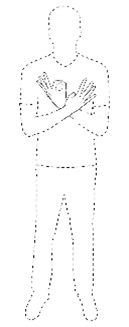In the world of sport, where celebrations become as iconic as the goal-scoring moments themselves, athletes are increasingly recognising that their signature gestures can form part of their wider commercial and personal brand strategy.
The recent flurry of activity surrounding Chelsea footballer Cole Palmer and his trade mark applications (which include a motion mark for his "Cold Palmer" celebration) demonstrates both the opportunities and potential pitfalls surrounding celebrity brand protection.
A cold reality: The Cole Palmer trade marks
Late last year, Cole Palmer, through Palmer Management Limited, filed UK trade mark applications to trade mark his signature, image, and his name ‘COLE PALMER’, as well as his nickname ‘COLD PALMER’ and the associated iconic shivering celebration. These applications all covered an ambitious range of goods and services (spanning 16 classes), from toiletries to clothing and footwear, but crucially for this particular cautionary tale, alcoholic beverages.
Enter Château Palmer, a leading wine estate in Margaux, France, located in the Bordeaux region, with a history and heritage going back to 1814.
On 6 August 2025, the prestigious Bordeaux producer formally opposed the COLD PALMER trade mark application, prompted by the inclusion of “wines” in Class 33 (the Class 33 specification also included Alcoholic beverages; alcoholic fruit beverages; pre-mixed alcoholic beverages; spirits; liqueurs; alcoholic energy drinks; low alcoholic beverages). While the opposition did not progress to a decision and the mark achieved registration on 3 October 2025, the result of the dispute was still clear: the term “wines” has been deleted from the application, and the restriction, “none of the aforesaid including wines”, has been added to the Class 33 wording.
Interestingly, the COLD PALMER specification was not the only one seen as problematic by the Château, as the same restriction has been applied to the COLE PALMER application as well. However, the footballer’s signature, image and celebration marks continue to cover “wines” in Class 33.
This outcome serves as a useful reminder that established brand owners will defend their core products, regardless of how famous an applicant might be or how different their backgrounds may appear. Heritage brands with substantial goodwill remain vigilant, and celebrity status offers no exemption from challenge.
The ‘shiver’ motion mark
The Palmer filings are particularly noteworthy due to the breadth of the approach taken, and demonstrate a coordinated effort to protect every distinctive element of the athlete’s personal brand. Among the various applications, the most striking is the motion mark application for the footballer’s "shivering" goal celebration: a gesture where he wraps his arms around himself and rubs his shoulders, as if shivering from the cold.
While motion marks and other non-traditional trade marks have been available in the UK since early 2019, they remain relatively uncommon. Palmer’s application stands out as a novel strategy at the intersection of intellectual property and sport. Athletes have long protected their names, likenesses and signatures, and more recently tried to protect certain gestures with figurative marks; however, seeking a motion mark for a physical celebration is a bold step with the potential to break new ground.
The scope of such protection does however have its limits. Even if registered, enforcing a motion mark can be difficult as the gesture must be used as a trade mark in a commercial context, and in relation to the goods and/or services covered by the mark. Proving infringement may be challenging if the movement is seen as generic, non-distinctive, or used in a non-commercial contexts.
A growing trend among athletes?
While the motion mark has certainly shaken things up a bit, Palmer is not the only athlete looking to trade mark his personal brand, or in this case, his celebratory gestures.
In 2018, the now Real Madrid footballer Kylian Mbappé successfully registered his crossed-arms celebration pose at the EUIPO, though notably this was for a figurative trade mark. Since then, he has also registered trade marks for his name and initials, as well as KM9 and KM10, to signify his transition from the No.9 jersey to the legendary No.10 jersey.
More recently, Barcelona's Lamine Yamal holds both figurative and position marks at the EUIPO for his “304” goal celebration – a nod to the last three digits of the 08304 postal code of his Rocafonda neighbourhood in Mataró. His other marks include LY304, 304, 304 FC, and of course, his name, LAMINE YAMAL.
Beyond football, renowned sprinter Usain Bolt also owns several trade marks, including his name, initials and signature, but perhaps the most iconic is the figurative mark of his celebration pose, which he has held since 2009.
|

|
 |
 |
 |
|
Kylian Mbappé’s crossed-arm celebration pose (Fig.)
|
Lamine Yamal’s “304” celebration (Fig.)
|
Lamine Yamal’s “304” celebration (Pos.)
|
Usain Bolt’s ‘Lightning Bolt’ celebration pose (Fig.)
|
All of these applications and registrations reveal a coordinated approach to personal brand management. Athletes are no longer just registering their names but are simultaneously protecting multiple elements of their persona, especially as distinctive gestures and phrases become increasingly valuable commercial assets. The commercial logic is clear here, and paves the way for expanded licensing and sponsorship opportunities – including, potentially, in video games.
Key takeaways: The professionalisation of personal brands
The Palmer trade marks, coupled with the ‘viral-ness’ of sporting celebrations and the growing appetite to protect them, offers several important lessons to all brand owners:
1. Clearance searches are non-negotiable
Before filing, conduct thorough searches not just for identical marks but for similar ones as well, and cover off all the relevant countries and product categories. Even celebrities can come up against road blocks if these searches are not comprehensive!
2. Precision in specification drafting
When drafting specifications, it is important to balance ambition with pragmatism. In many cases, a narrower, well-defined specification that avoids opposition and costly disputes can prove far more valuable than a broader one which invites challenges and delays.
3. Think holistically about protection
A robust portfolio takes into account all the distinctive elements of your brand. For brand owners, this might mean protecting not just your name, but your logo variations, colour schemes, product shapes and even the sounds or movements associated with your company.
If you have any questions relating to this topic, please get in touch with Asma Abbarová, Carol Nyahasha or your usual Kilburn & Strode advisor.